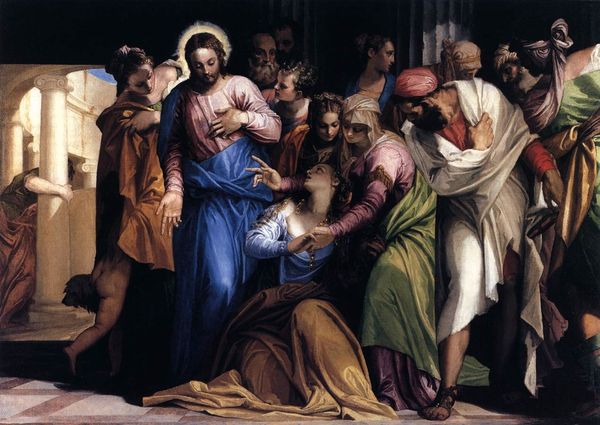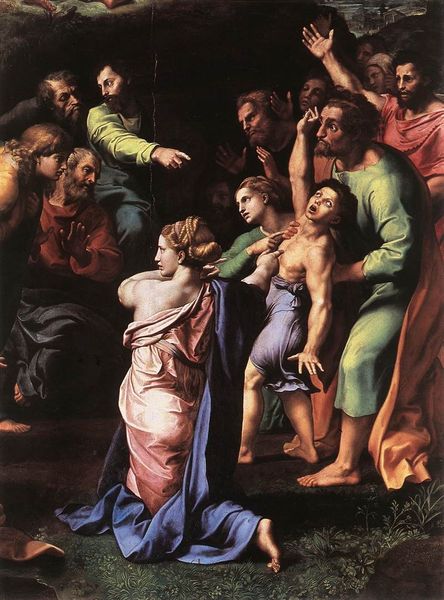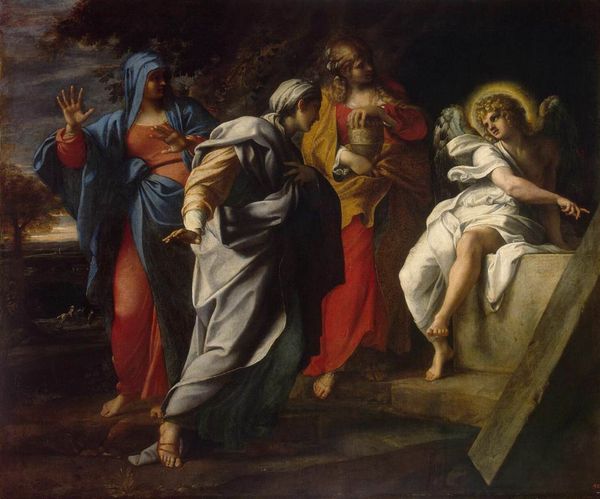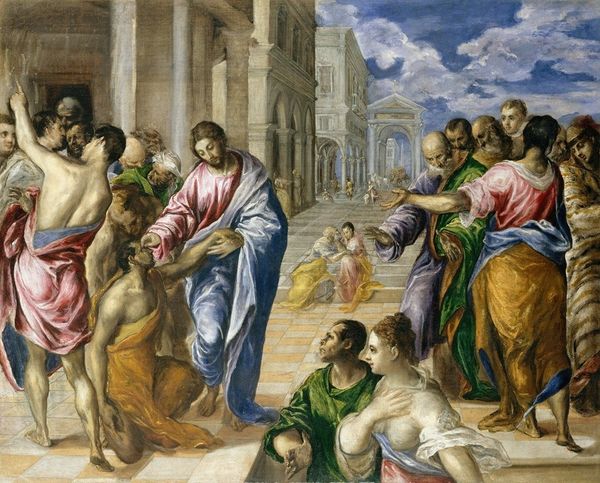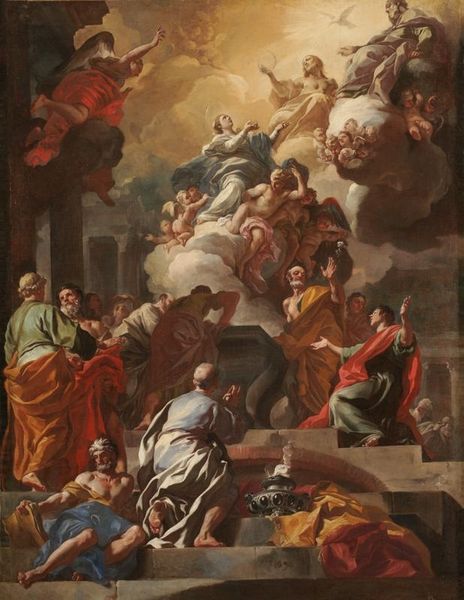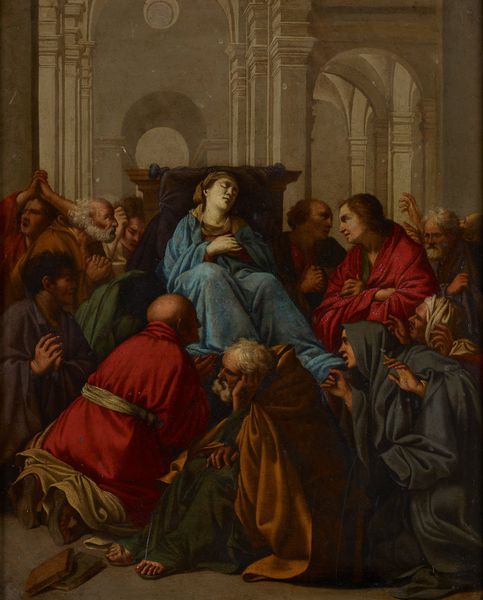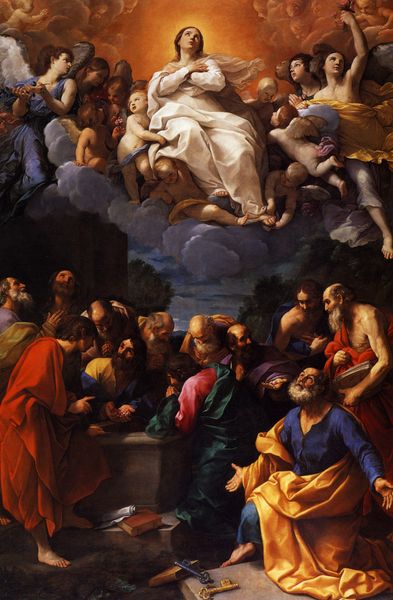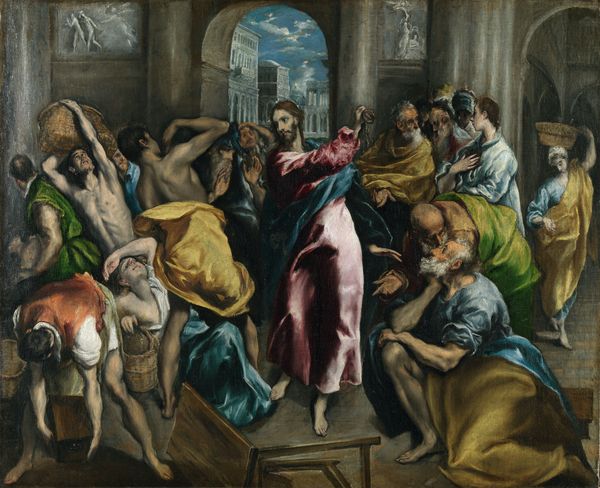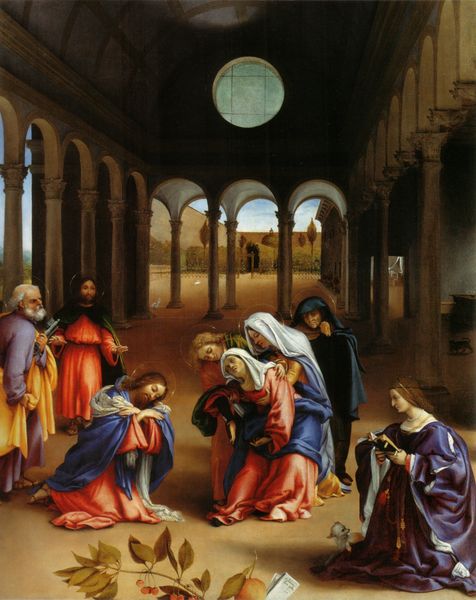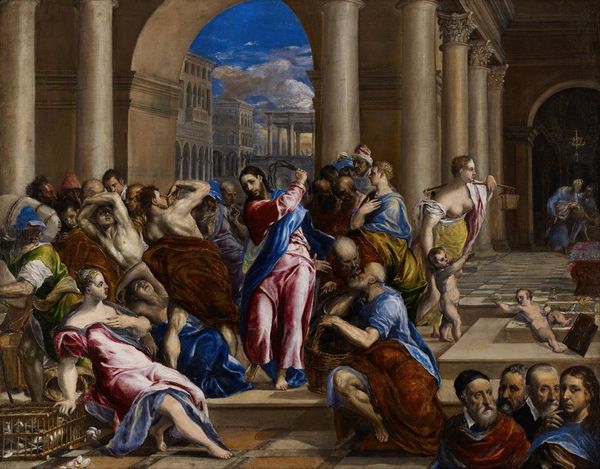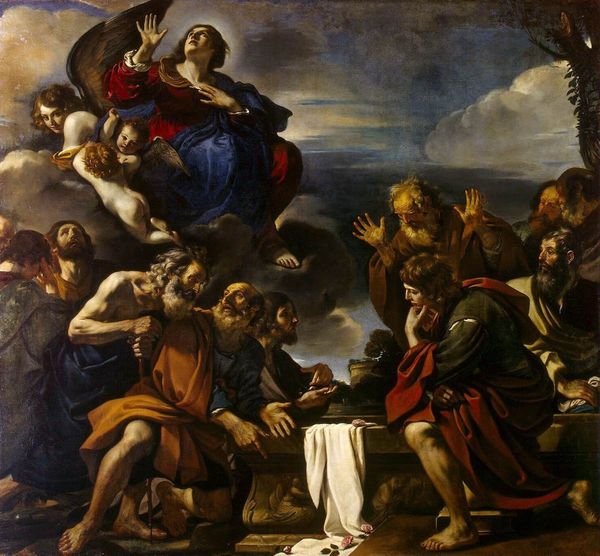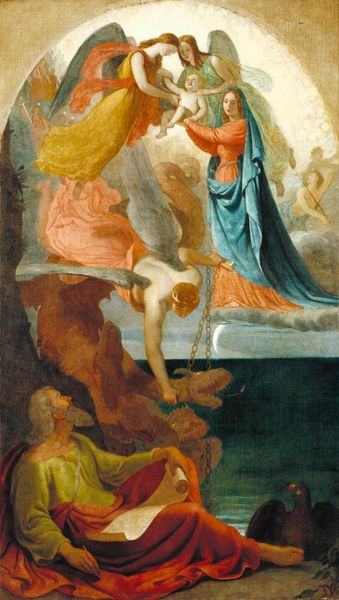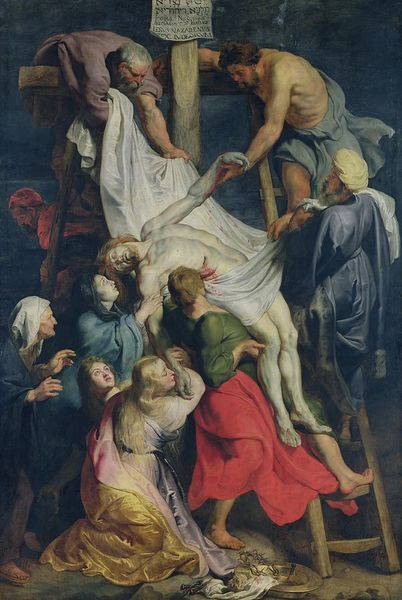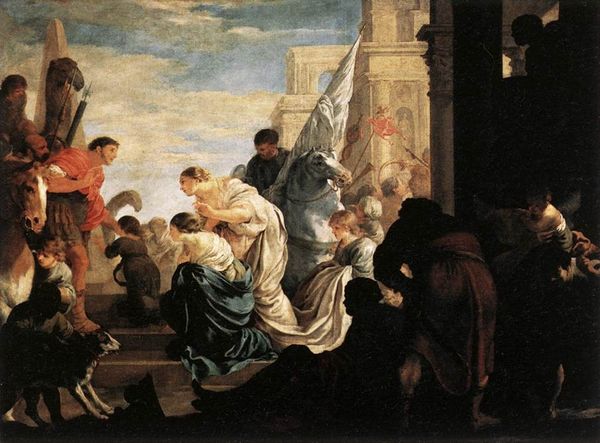
painting, oil-paint, fresco
#
allegory
#
narrative-art
#
baroque
#
painting
#
oil-paint
#
figuration
#
fresco
#
oil painting
#
history-painting
Copyright: Public domain
Eustache Le Sueur painted "The Resurrection of the Son of the Widow of Nain" using oil on canvas, and in it we see a crowd of figures bathed in a theatrical light. The bright, almost ethereal blue of Christ’s robes dominates the foreground and guides the viewer's eye through the unfolding miracle. The composition cleverly uses color and gesture to articulate a story of divine intervention. Note how the pallid complexion of the resurrected son contrasts sharply with the vibrant hues surrounding him, emphasizing the transition from death to life. The arrangement of figures, clustered yet distinct, captures a range of emotional responses from awe to disbelief. Consider how Le Sueur employs baroque dynamism within a classical framework. This reflects a broader cultural interest in the interplay between human emotion and divine power. The architecture suggests a stage. This adds to the artwork's dramatic effect, drawing attention to the symbolic and spiritual implications of the depicted event. Through his skillful use of color, composition, and form, Le Sueur invites us to contemplate themes of mortality, faith, and the transformative power of the divine.
Comments
No comments
Be the first to comment and join the conversation on the ultimate creative platform.
